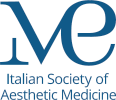INTRODUCTION
Microsurgery plays a pivotal role in complex reconstructive procedures, aiming to restore both function and aesthetics 1-3. The microvascular coupler device has revolutionized venous anastomosis by significantly reducing operative times and ensuring high patency rates 4,5. Its use, however, demands precise technique and complete intima-to-intima apposition, highlighting the need for structured training and a gradual learning curve 6.
Simulation training on animal models has long been recognized as essential in microsurgical education. Among these, the pig is frequently adopted due to its anatomical and physiological similarities to humans. The objective of this study is to present and validate a porcine model for microvascular coupler training in novice surgeons.
MATERIALS AND METHODS
Five venous microanastomoses were performed on two common-breed adult pigs (Sus scrofa domesticus), each weighing approximately 35 kg. Animals were placed in a supine position under general anesthesia. Using 2.5× magnification loupes, the medial saphenous vein of the thigh was dissected, isolated, and clamped proximally and distally through an approximately 8 cm skin incision. The vessel was transected and mechanically anastomosed using a 2.5 mm microvascular coupler device. Procedural steps were documented photographically. Anastomotic patency was evaluated immediately post-procedure through direct inspection and confirmation of vessel refill after clamp release. All procedures were conducted in compliance with institutional animal care guidelines.
RESULTS
All five anastomoses were completed without complications. The anatomical consistency of the porcine vascular structures allowed for reproducible dissection and coupling of the veins. Vessel size and wall characteristics closely matched those found in human flap procedures.
Immediate patency was confirmed in all cases. No device-related technical failures were observed. Surgeons reported improved confidence and dexterity with each subsequent procedure, reflecting a measurable learning curve.
DISCUSSION
The microvascular coupler device offers several advantages over conventional sutured anastomosis: reduced anastomotic time, decreased vessel manipulation, and consistently high patency rates 4,5. However, sutured techniques allow for greater flexibility in vessel orientation, the ability to handle fragile or mismatched vessels, and are indispensable in arterial anastomoses or small-caliber veins (Figs. 1-2). Table I provides a comparison of the two techniques. Simulation training bridges the gap between theoretical learning and practical execution. The pig model, validated in studies involving the gluteal artery perforator flap 7,8, deep inferior epigastric perforator flap 9, and internal mammary vessels 10, provides diverse anatomical sites for coupler application, allowing comprehensive microsurgical exposure.
In our series, repeated exposure to the coupler device within a realistic vascular environment enabled significant procedural refinement and confidence building. Moreover, the use of multiple anatomical sites within the same animal optimizes resource utilization and minimizes ethical concerns related to animal use.
CONCLUSIONS
Training with the microvascular coupler on a porcine model provides a highly realistic and effective approach to enhancing surgical proficiency in microsurgery. This model accelerates skill acquisition, shortens the learning curve, and promotes safer, more efficient clinical outcomes. Future studies with larger sample sizes and quantitative performance assessments could further validate its role in microsurgical education.
Conflict of interest statement
The authors declare no conflict of interest.
Funding
This research did not receive any specific grant from funding agencies in the public, commercial, or not-for-profit sectors.
Author contributions
All authors contributed substantially to this work.
FT, PP: conceived the study
DM, EC, SD: drafted and revised the manuscript
DM, SD, EC: performed the experiments and analyzed the data
Ethical consideration
The animals were treated in accordance with Directive 2010/63/EU of the European Parliament and of the Council on the protection of animals used for scientific purposes (22 September 2010), as well as Italian Legislative Decree No. 26 of 4 March 2014, which establishes the regulations on the protection of animals used for scientific purposes, including experimentation and teaching.
History
Received: March 23, 2025
Accepted: September 8, 2025
Figures and tables
Figure 1. Mechanical vein anastomosis on a porcine model. A) preparation of the vessels for anastomosis with a coupler; B) coupler locking with forceps.
Figure 2. Mechanical vein anastomosis on a porcine model. A) result of venous anastomosis with coupler; B) removal of microvascular clamps.
| Feature | Coupler-assisted anastomosis | Classical sutured anastomosis |
|---|---|---|
| Time efficiency | High | Moderate to low |
| Learning curve | Moderate | Steep |
| Applicability | Best for venous anastomoses | Universal |
| Cost | Higher (device-dependent) | Lower (suture-only) |
| Vessel mismatch tolerance | Limited | High |
| Risk of twisting | Low | Moderate |






